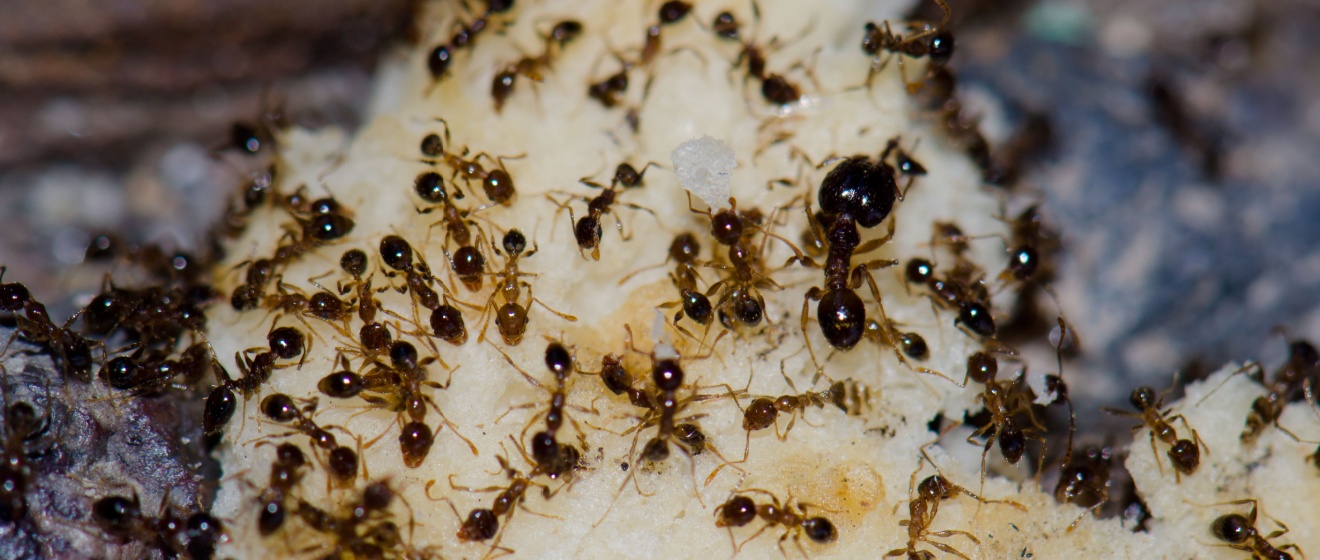Arizona’s desert climate is home to many unique and fascinating creatures, but not all of them are welcome in your home. Among the most persistent and frustrating pests are common ants. From harmless nuisance species to those that can cause painful stings or structural damage, ants are a frequent invader in East Valley homes and businesses.
If you’ve been noticing lines of ants marching through your kitchen or yard, it’s essential to know which species you’re dealing with. In this post, we’ll explore the most common ants in Arizona and how to identify them, plus what you can do to get rid of them for good.
1. Argentine Ants
Argentine ants are among the most widespread and common ants in Arizona. These small, light to dark brown ants form massive colonies with multiple queens, making them incredibly difficult to eliminate without professional help.
How to Identify:
- Size: 1/16 to 1/4 inch long
- Color: Light to dark brown
- Behavior: Often seen in long trails, especially near food or moisture
- Nesting: Indoors in wall voids or outdoors in moist soil under logs, mulch, or sidewalks
Argentine ants aren’t dangerous, but they can contaminate food and are incredibly persistent.
2. Odorous House Ants
True to their name, odorous house ants emit a foul, rotten coconut smell when crushed. These tiny invaders love sweets and are commonly found foraging in kitchens and pantries.
How to Identify:
- Size: 1/8 inch long
- Color: Brown or black
- Behavior: Forage in long trails; move quickly when disturbed
- Nesting: Indoors near warm, moist areas or outdoors under stones and logs
These common ants can become a major nuisance, especially if they establish nests inside your home.
3. Pavement Ants
Often found nesting under driveways, patios, and sidewalks, pavement ants can also venture indoors in search of food. Though they’re more of a nuisance than a threat, they can be difficult to control once they find a reliable food source.
How to Identify:
- Size: 1/8 inch long
- Color: Dark brown to black with lighter legs
- Behavior: Often seen near sidewalks, driveways, and basement floors
- Nesting: Under concrete, stones, or cracks in pavement
While not aggressive, these common ants can contaminate food and require expert treatment to eliminate.
4. Fire Ants
Fire ants are notorious for their aggressive behavior and painful stings. These reddish ants build large mound nests and will defend their territory with venomous stings that can cause allergic reactions in some individuals.
How to Identify:
- Size: 1/8 to 1/4 inch long
- Color: Reddish-brown
- Behavior: Aggressive when disturbed; known for painful stings
- Nesting: Large dirt mounds in open, sunny areas such as lawns, parks, or along sidewalks
Fire ants are a serious threat to both people and pets. If you spot a mound, contact Adventure Pest & Wildlife immediately.
5. Carpenter Ants
Unlike termites, carpenter ants don’t eat wood—they excavate it to build their nests. Over time, they can cause serious structural damage if left unchecked.
How to Identify:
- Size: 1/4 to 1/2 inch long
- Color: Black, red, or a combination of both
- Behavior: Nocturnal; often found near wooden structures or damp areas
- Nesting: Inside wall voids, window frames, and dead or water-damaged wood
These ants are less common ants but far more damaging, especially in older homes or those with moisture issues.
6. Harvester Ants
Typically found outdoors in desert areas, harvester ants are known for their large, cleared nest areas and painful stings. While not usually found indoors, they can be a threat to barefoot children and pets in the yard.
How to Identify:
- Size: 1/4 to 1/2 inch long
- Color: Red to dark brown
- Behavior: Forage during the day; build large, flat nests
- Nesting: Open, sandy areas with little vegetation
Though less likely to invade your home, harvester ants should not be ignored. Their sting is painful and can cause serious reactions in sensitive individuals.
What to Do About Ant Infestations
Ants are incredibly adaptable, and once they find food or water, they’ll keep coming back. DIY sprays and traps may offer temporary relief, but a long-term solution requires expert pest control.
Adventure Pest & Wildlife offers targeted treatments for all types of common ants. Our expert technicians will:
- Identify the species of ant
- Locate nests and entry points
- Apply safe, effective treatments indoors and outdoors
- Offer prevention tips and routine service plans
We understand Arizona’s unique pest pressures and know exactly how to protect East Valley homes.
Trust the East Valley’s Ant Control Experts
Whether you’re dealing with aggressive fire ants, damaging carpenter ants, or just a line of odorous house ants invading your pantry, Adventure Pest & Wildlife is here to help. Our local, family-run team is committed to protecting your home with fast, effective, and affordable pest control solutions.
Don’t let common ants take over your home or yard. Contact Adventure Pest & Wildlife today to schedule your inspection and reclaim your space from unwanted pests.
